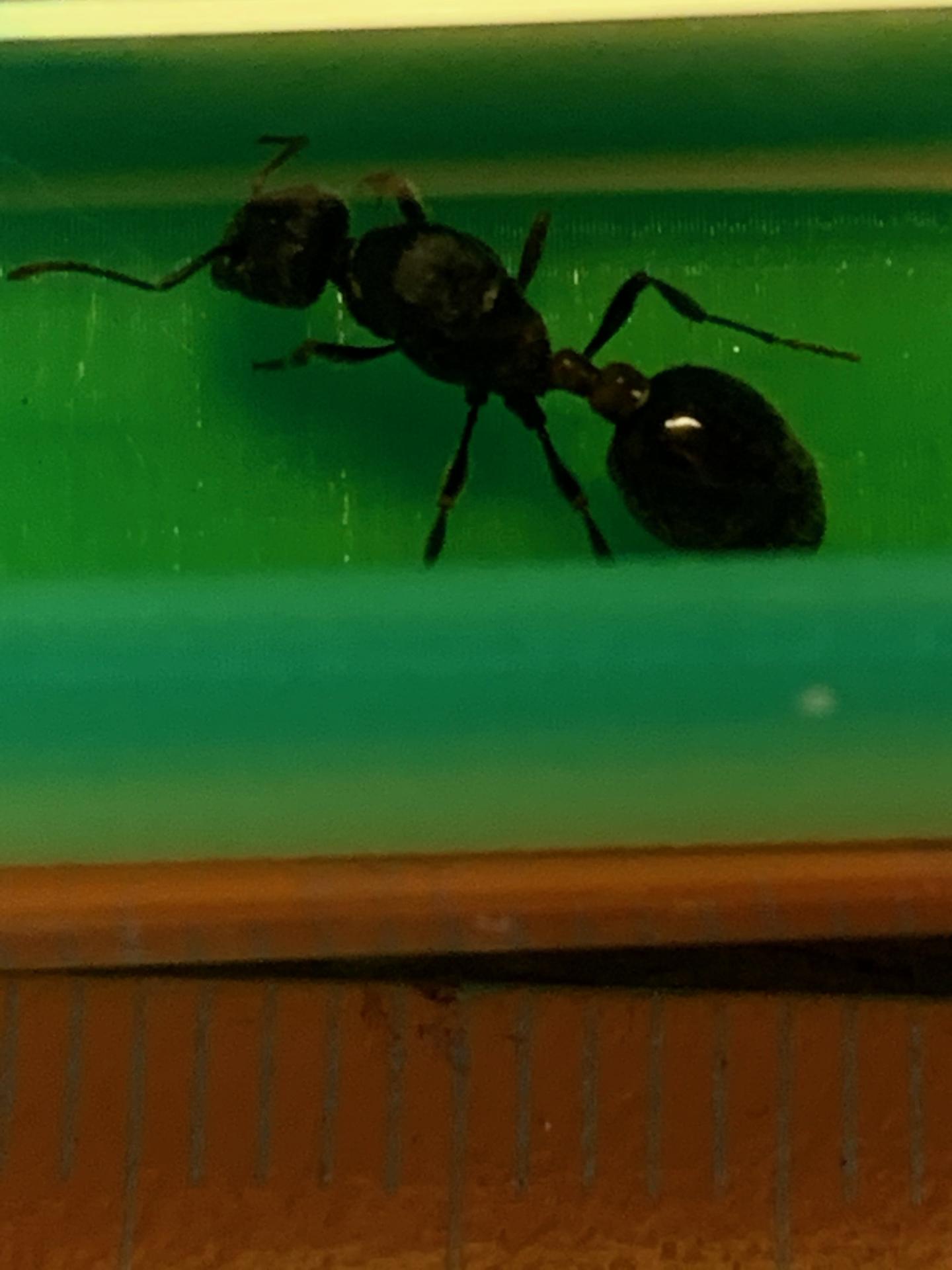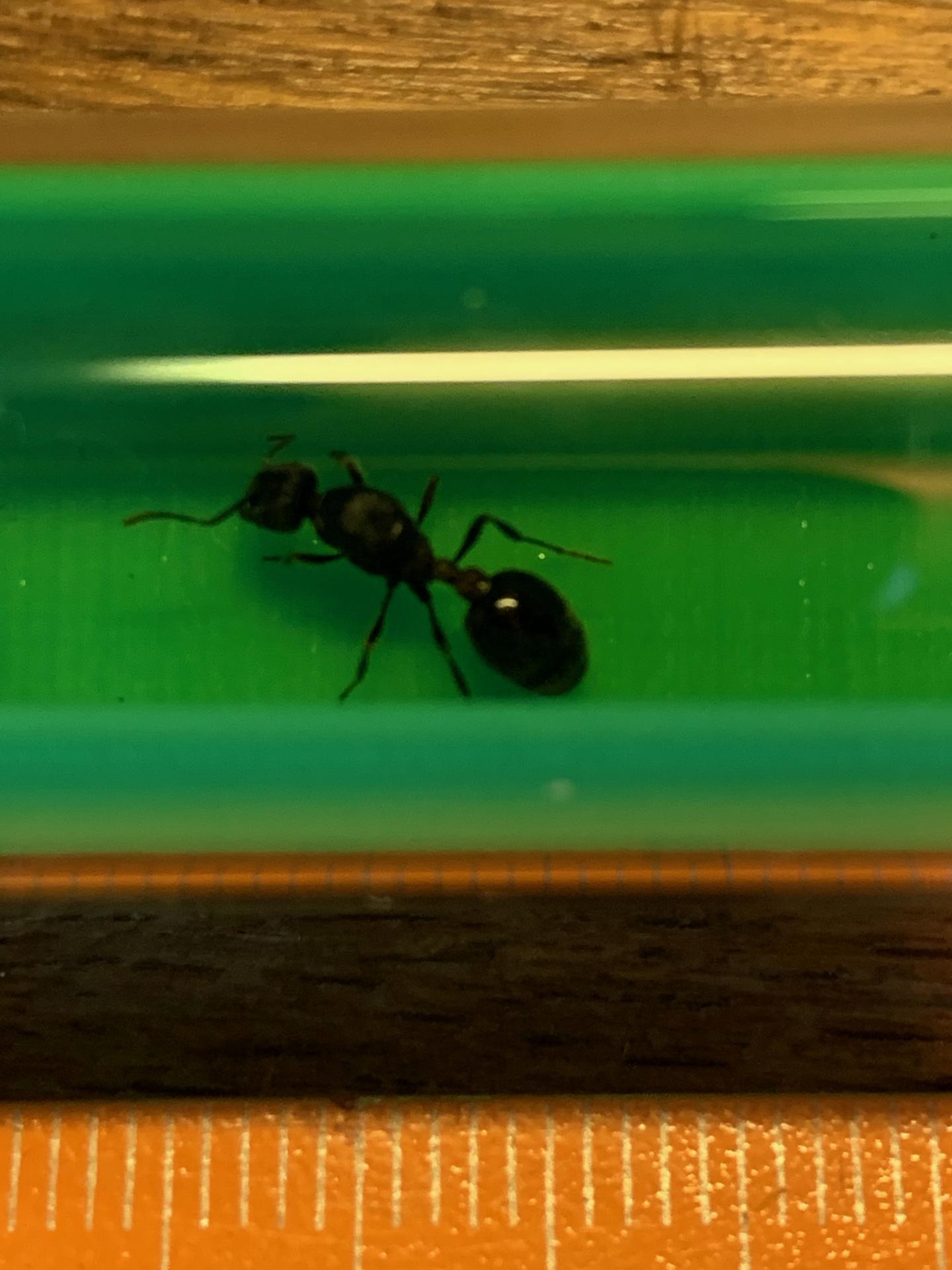I found this queen in the High Sierra south of Yosemite at about 7000 feet of elevation. I currently have her in a test tube set up and tried a bit of watered down maple syrup with her but she didn't show interest. Can someone please help me with two things: 1) ID to at least genus level, 2) Fully claustral or not? The scale below are in millimeters. She is about 10mm.
Thanks ahead of time for any help or information!






















